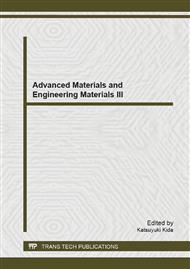p.630
p.634
p.638
p.644
p.649
p.653
p.658
p.664
p.668
Effect on the Grinding Performance by the Different Elements of the Auxiliary Material
Abstract:
The effect of different elements of the auxiliary material on the grinding performance was studied in this paper. Through the grinding experiment, the grinding performance of the abrasive tool can be obtained. It shows that the grinding rate decreased until its content reached to16% following with increasing the NaHCO3 content. And the abrasive removal rate reduced, while the grinding efficiency was lower than the abrasive tool without adding NaHCO3. When ZnO content was reached 3%, the grinding rate increased by 43.48% and the grinding efficiency was also improved; while continue to increase its content, the abrasive`s self-sharpening were reduced, which resulting the grinding rate declined. As the NBR (nitrile rubber) content increased, the grinding rate improved and while its content was 20%, the grinding rate increased by 45.93% and the abrasive removal rate reached to the lowest, but the grinding efficiency reduced more. While continue to add NBR, the grinding rate will decrease.
Info:
Periodical:
Pages:
649-652
Citation:
Online since:
February 2014
Authors:
Keywords:
Price:
Сopyright:
© 2014 Trans Tech Publications Ltd. All Rights Reserved
Share:
Citation:


